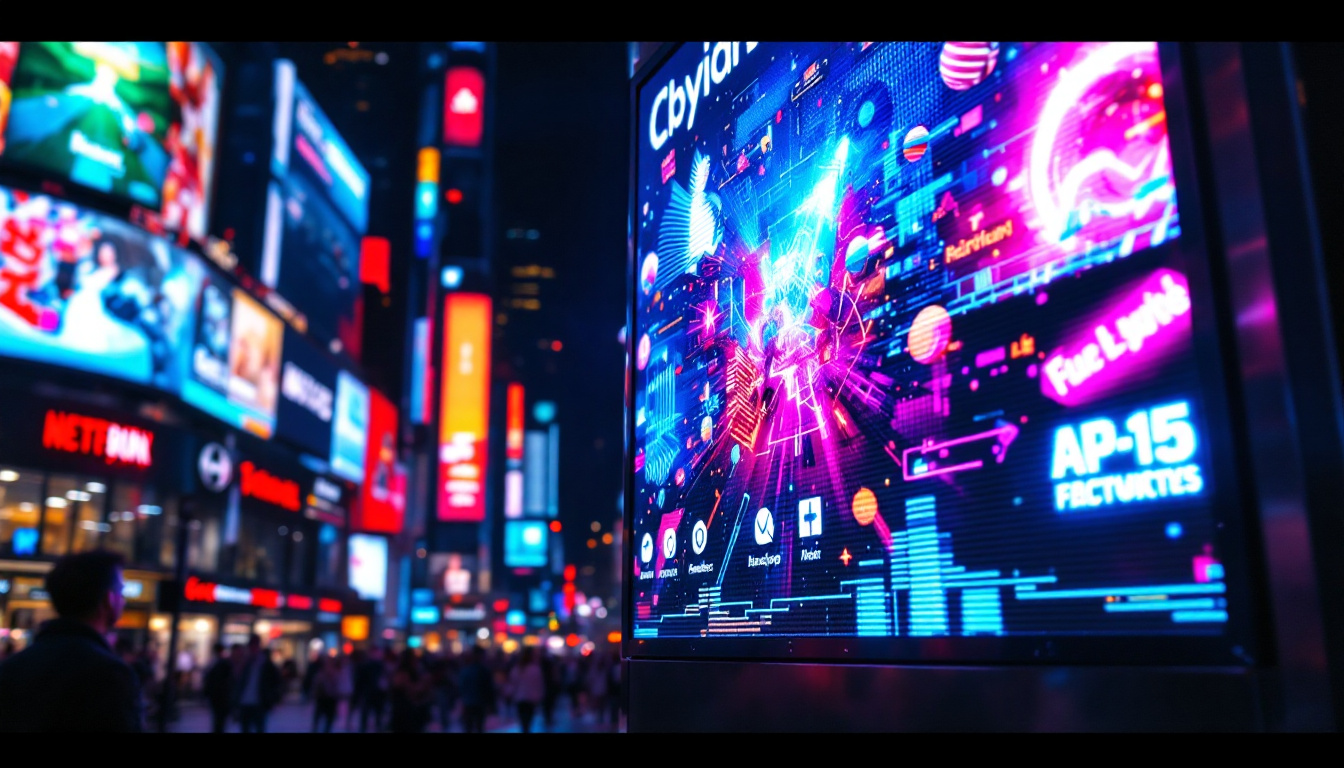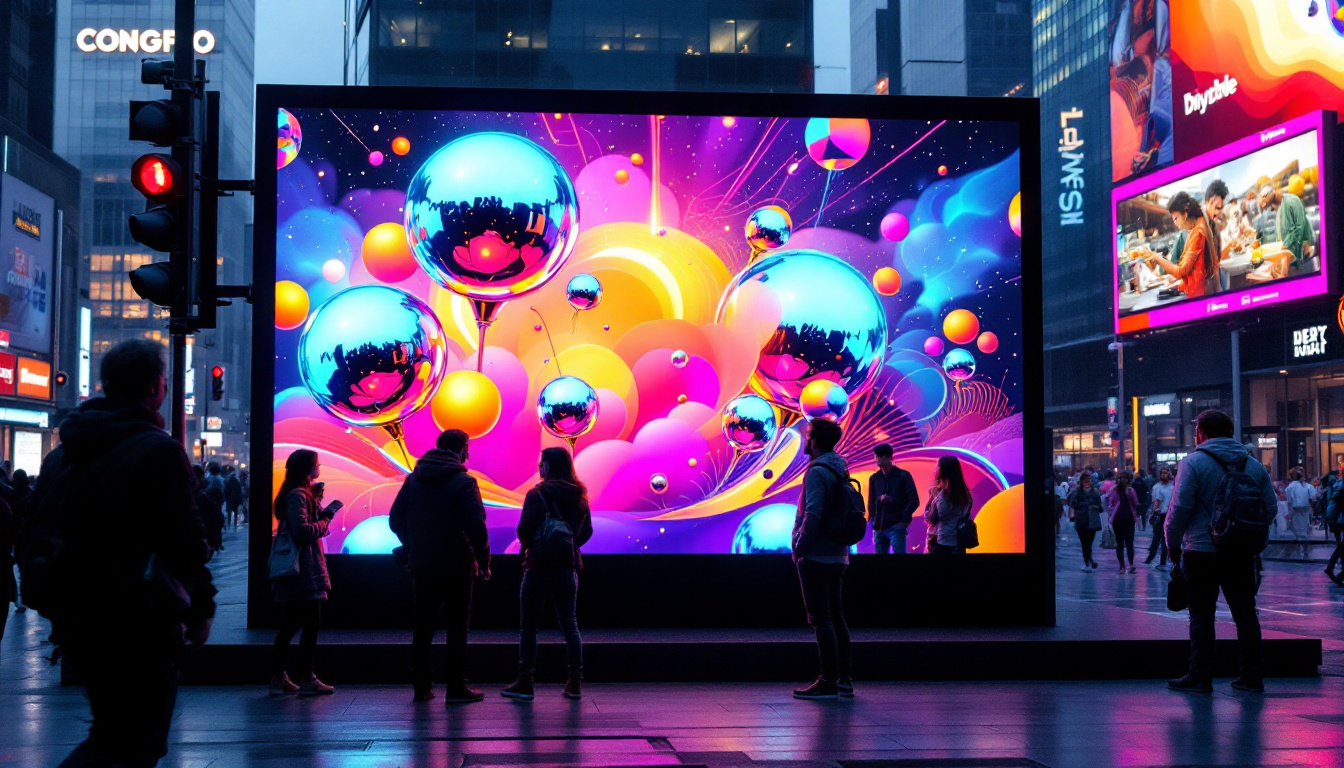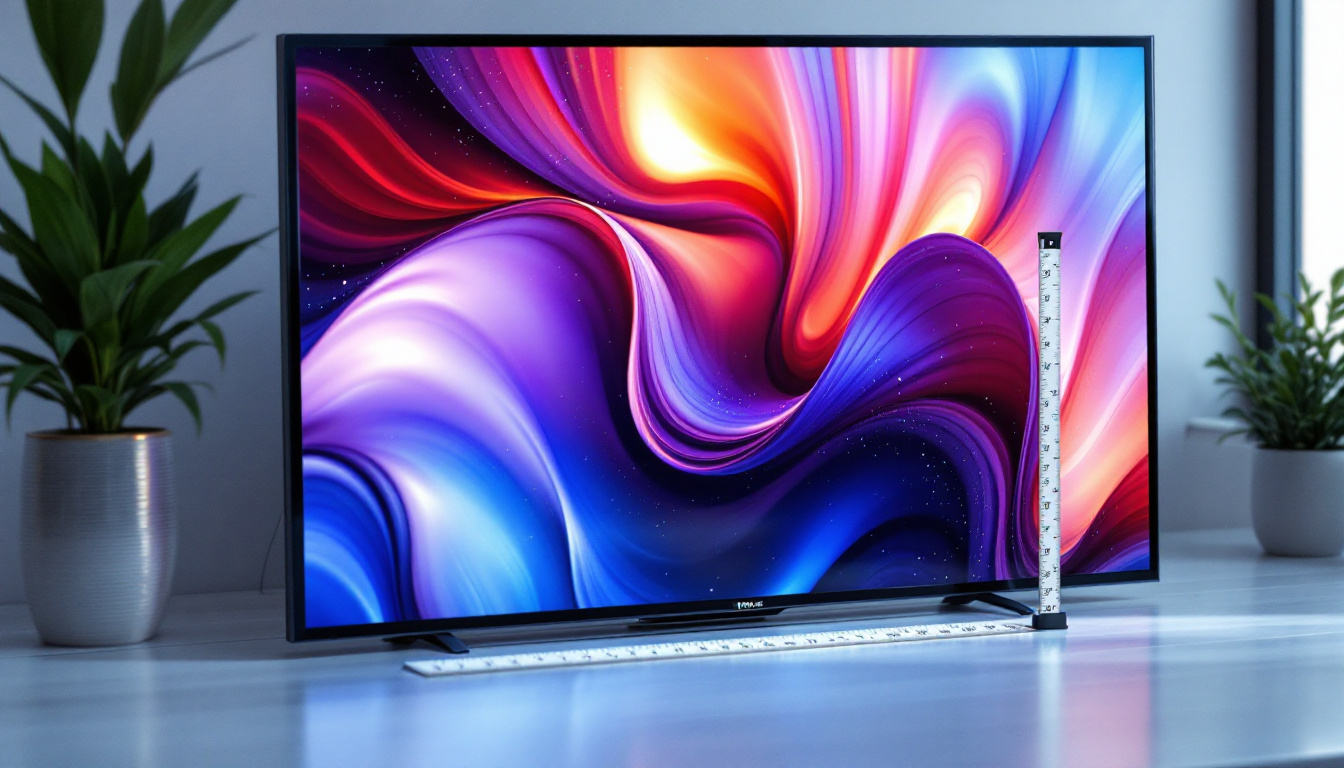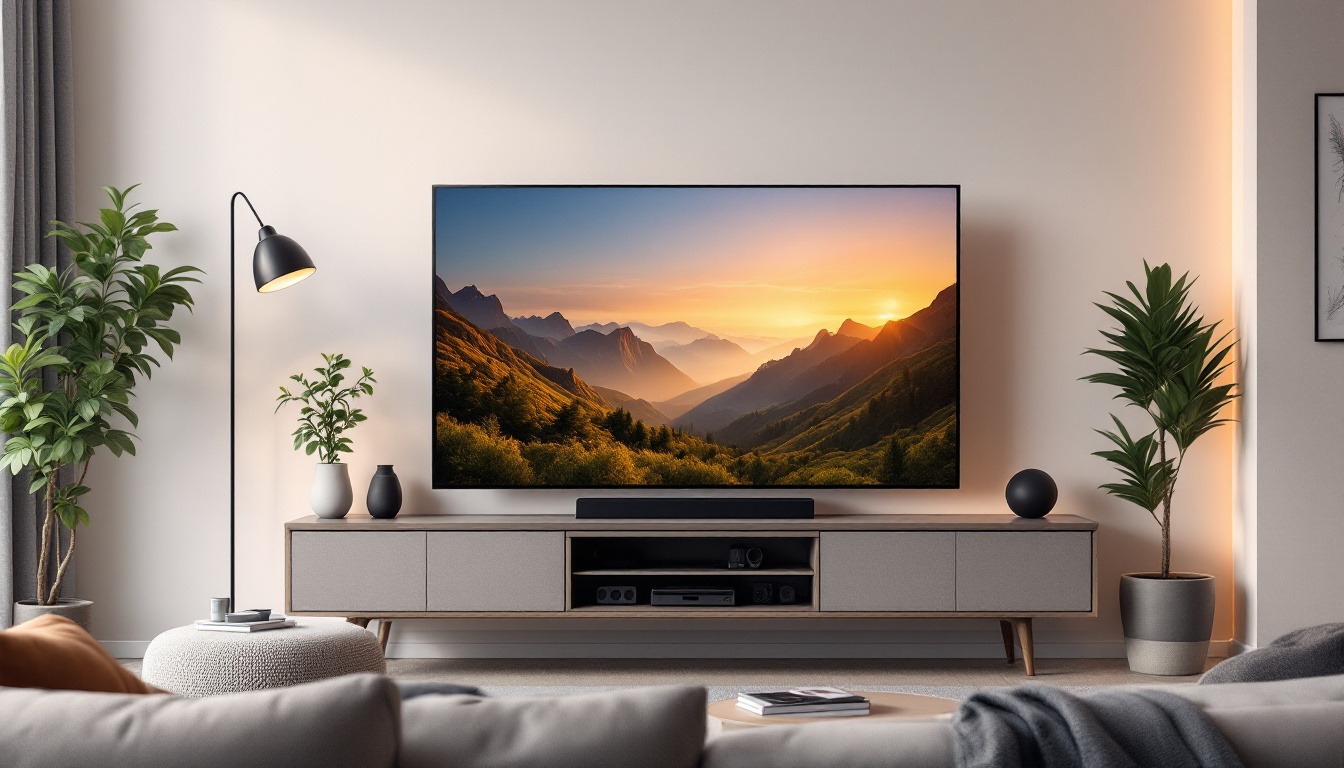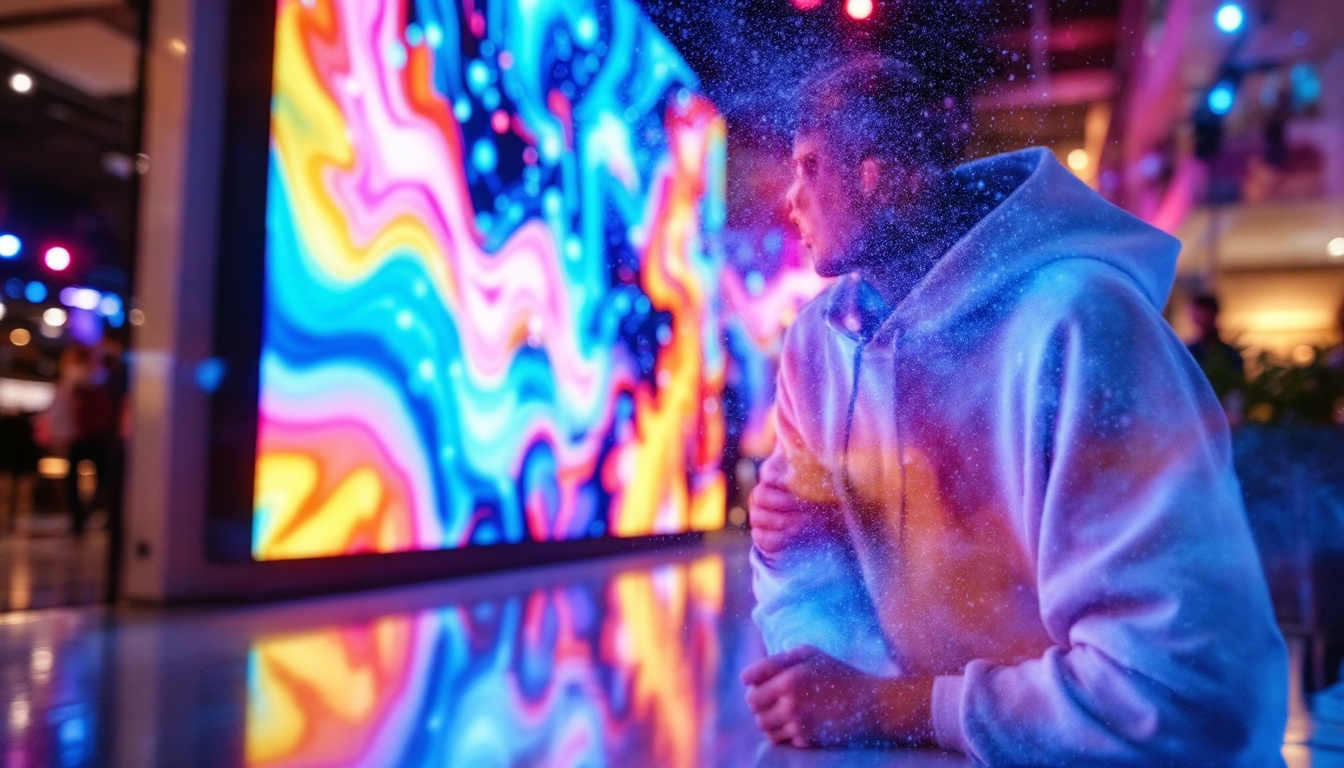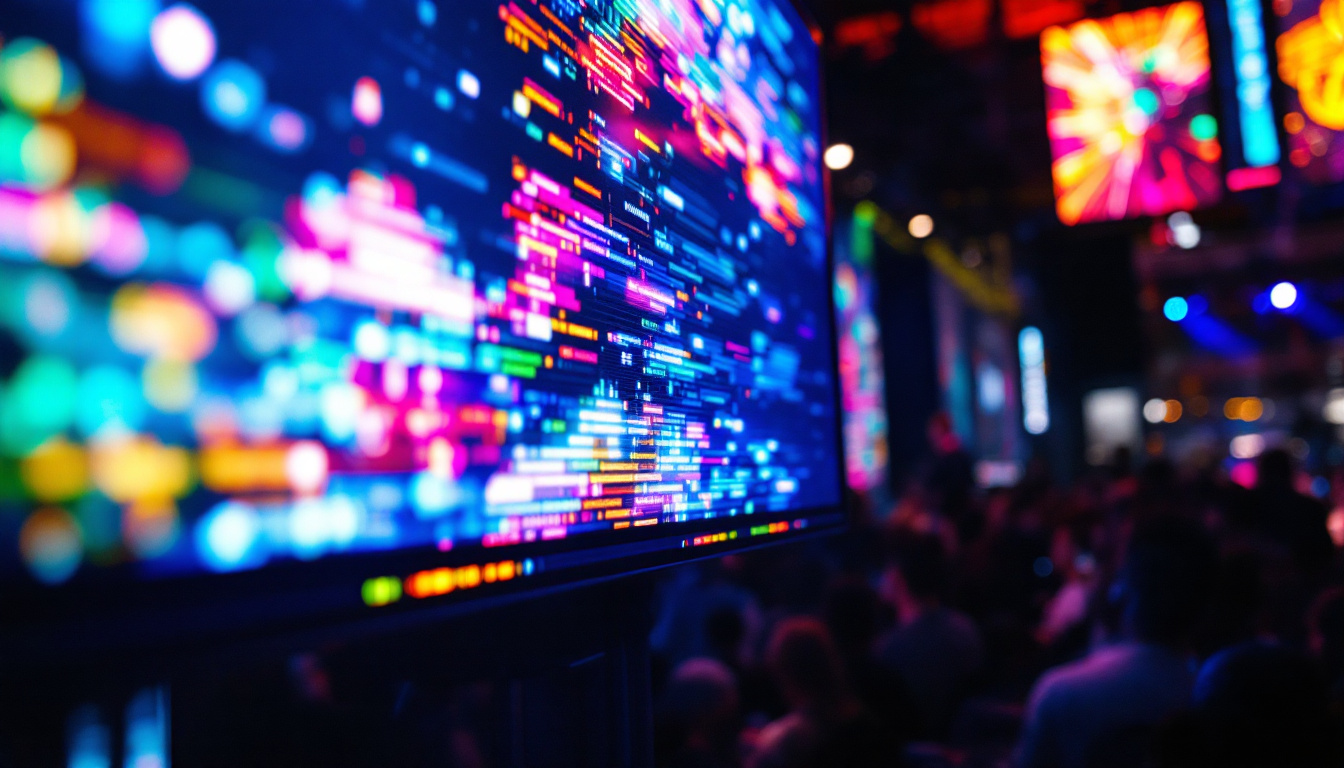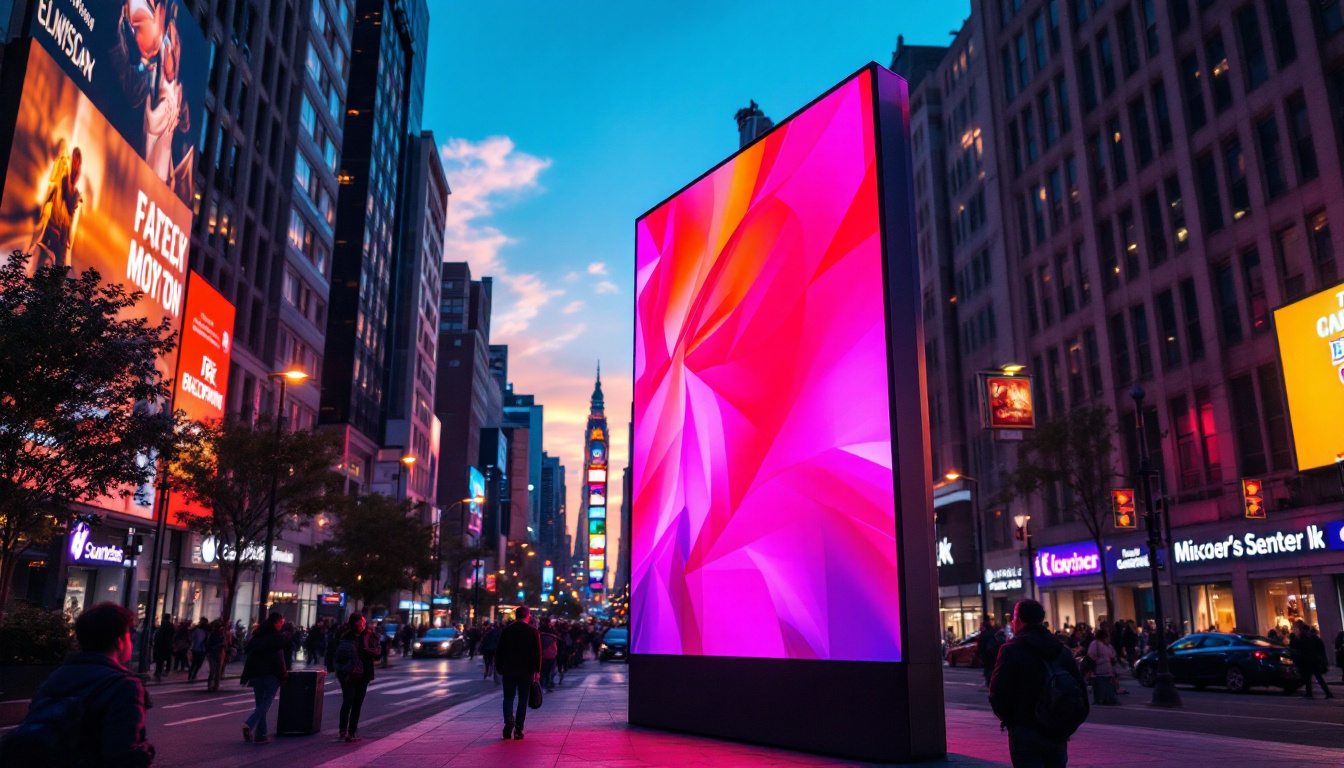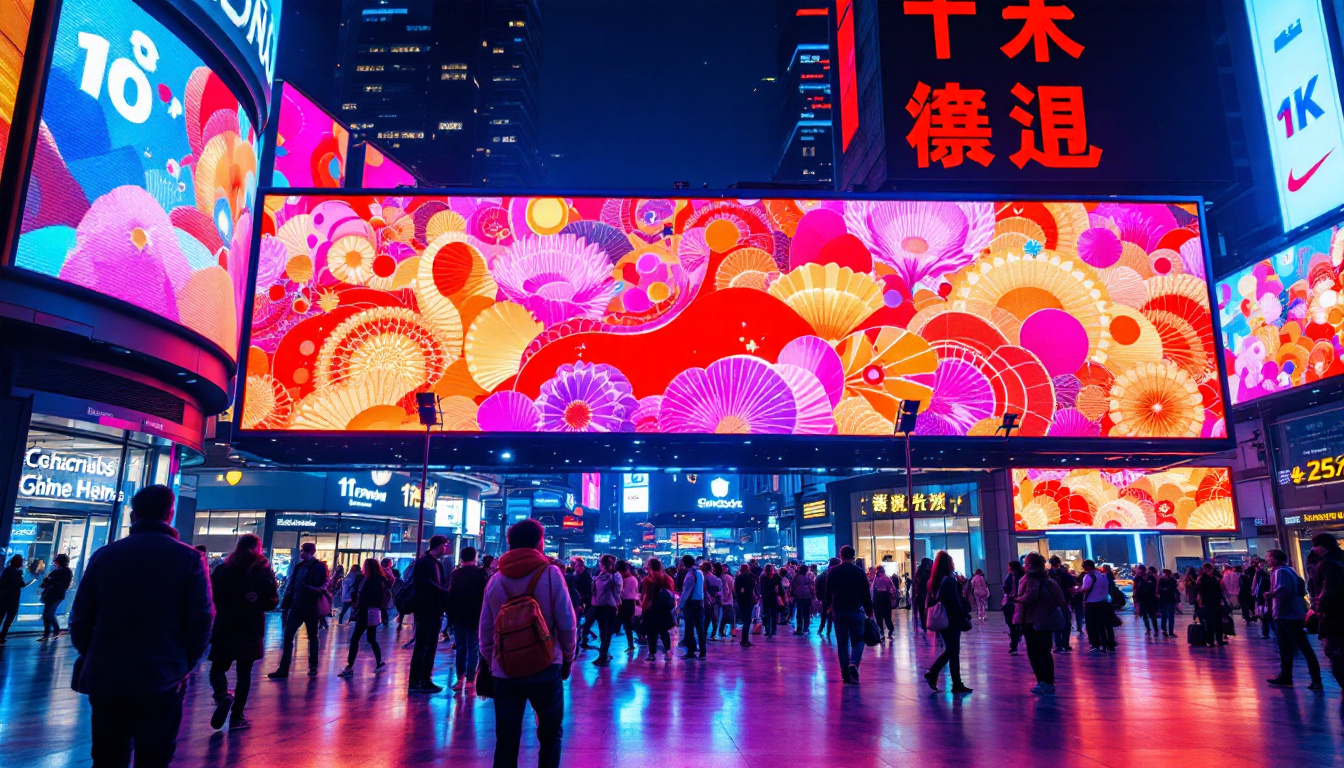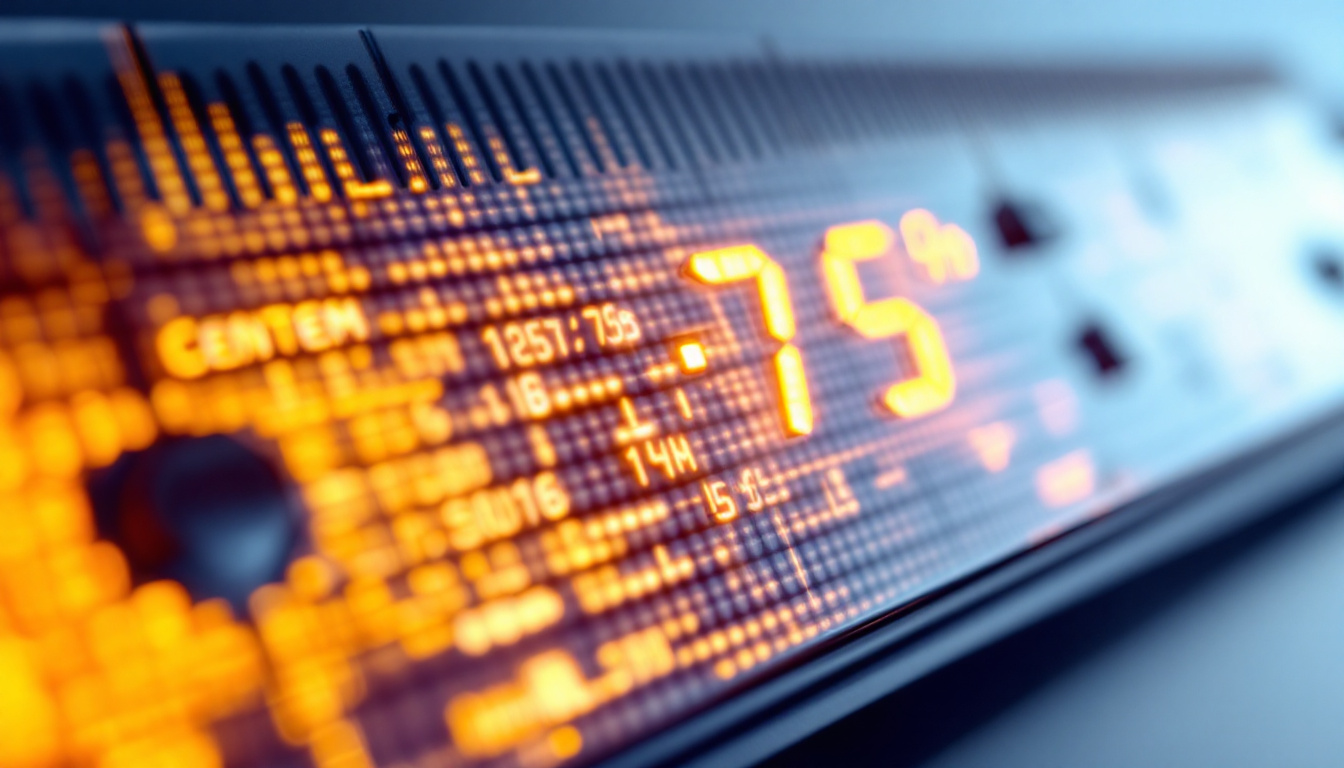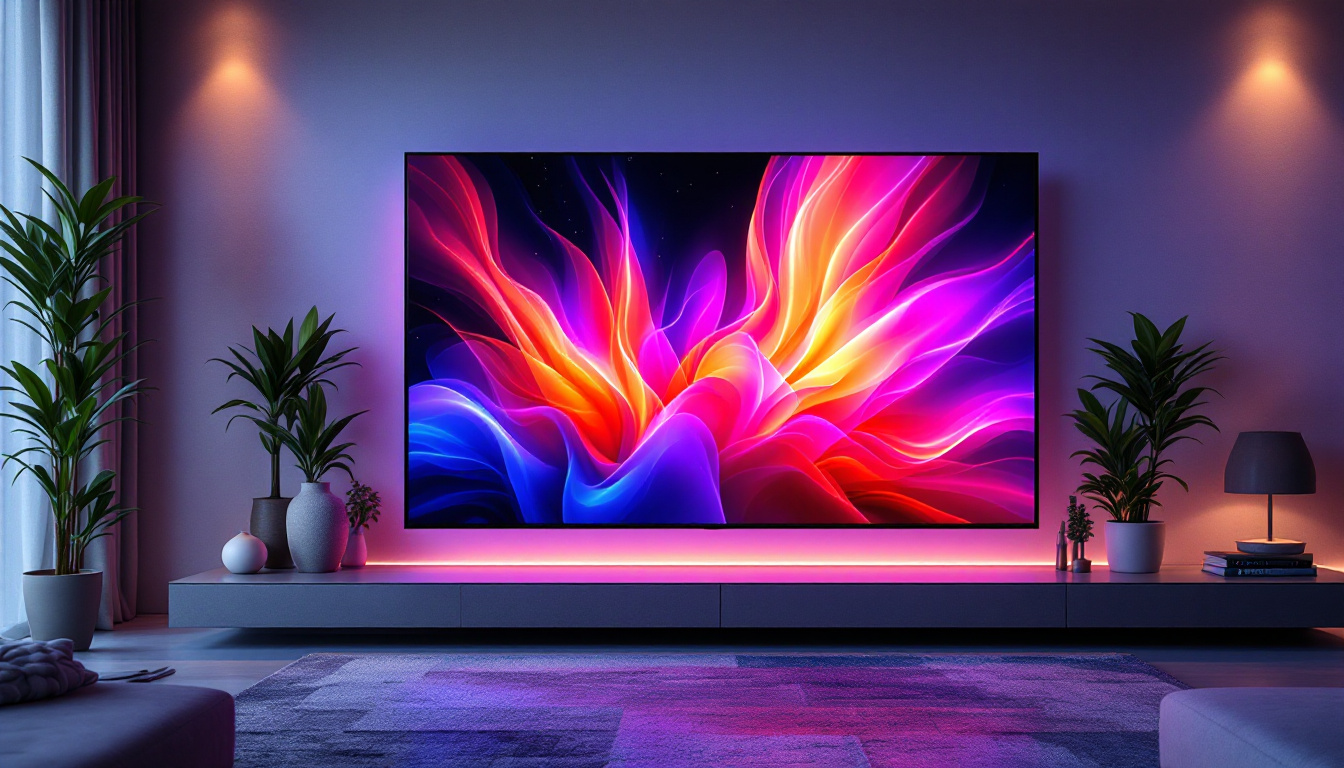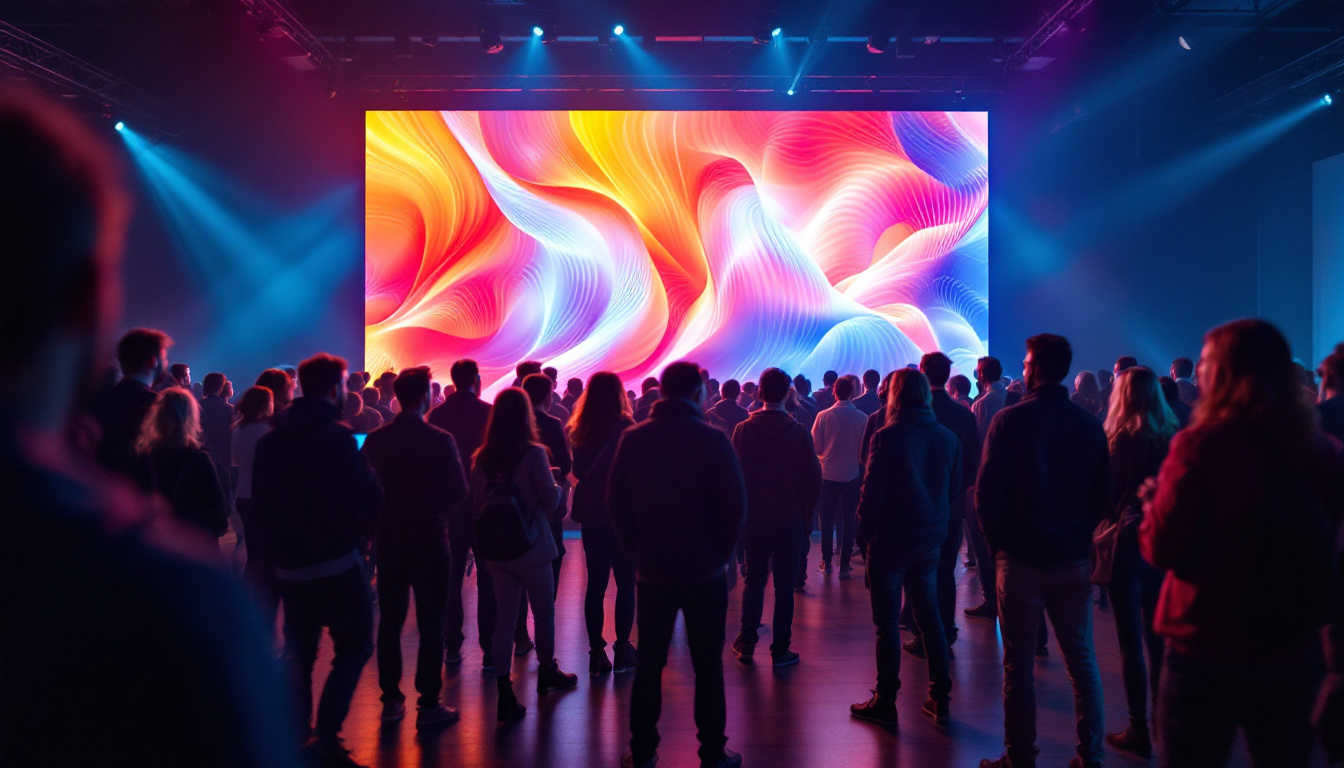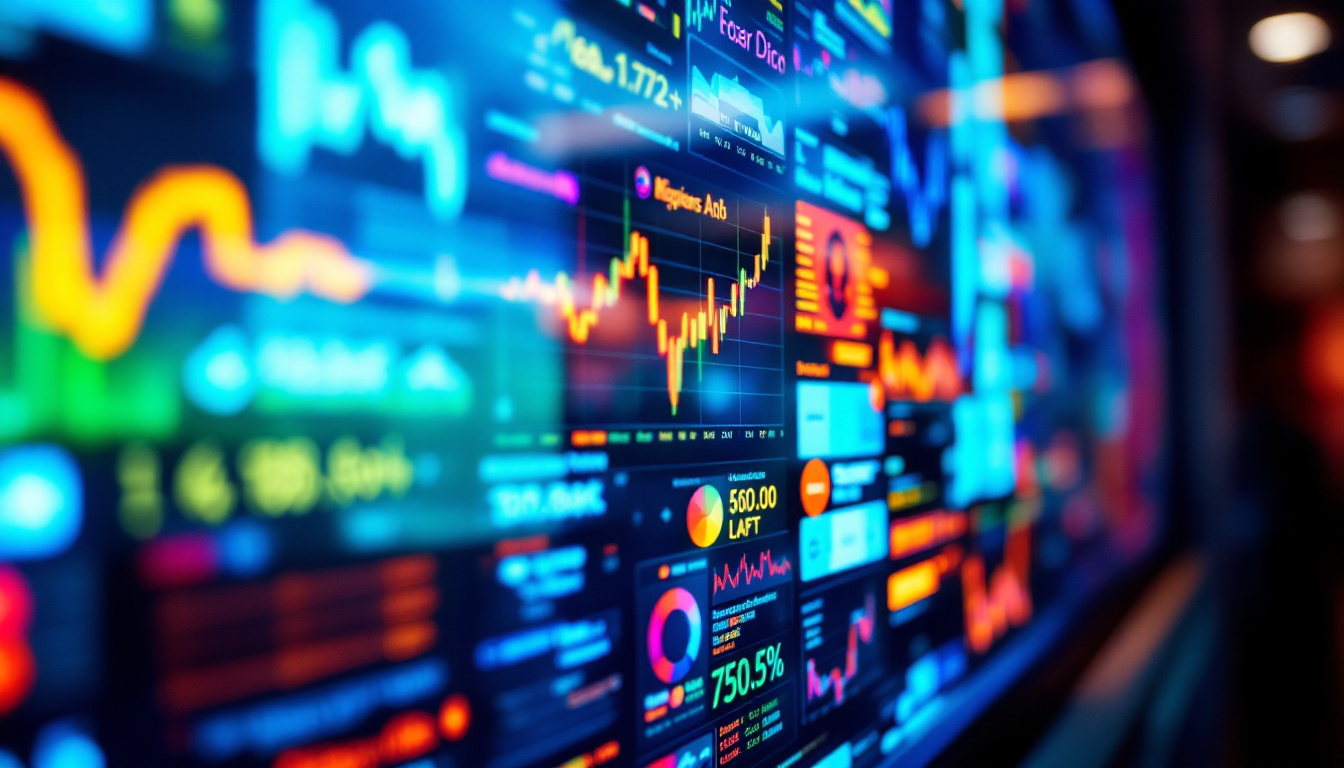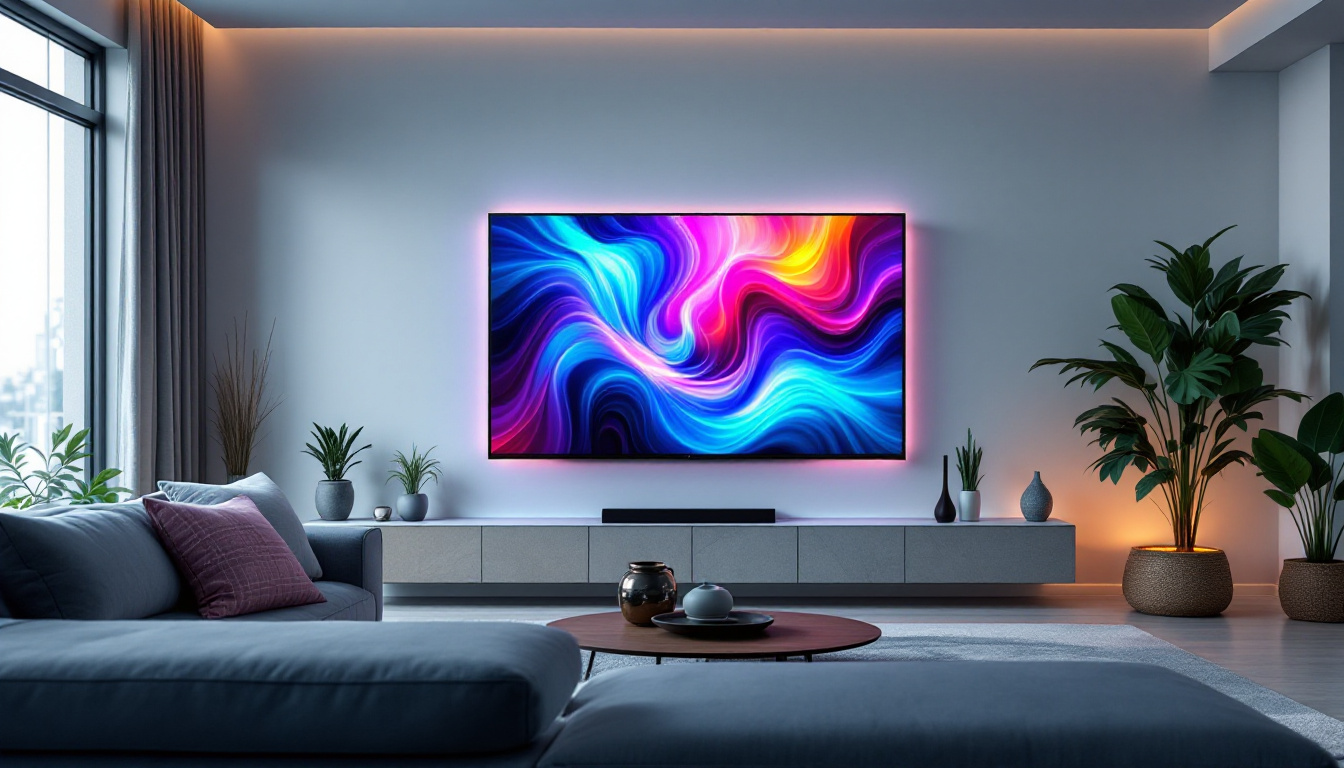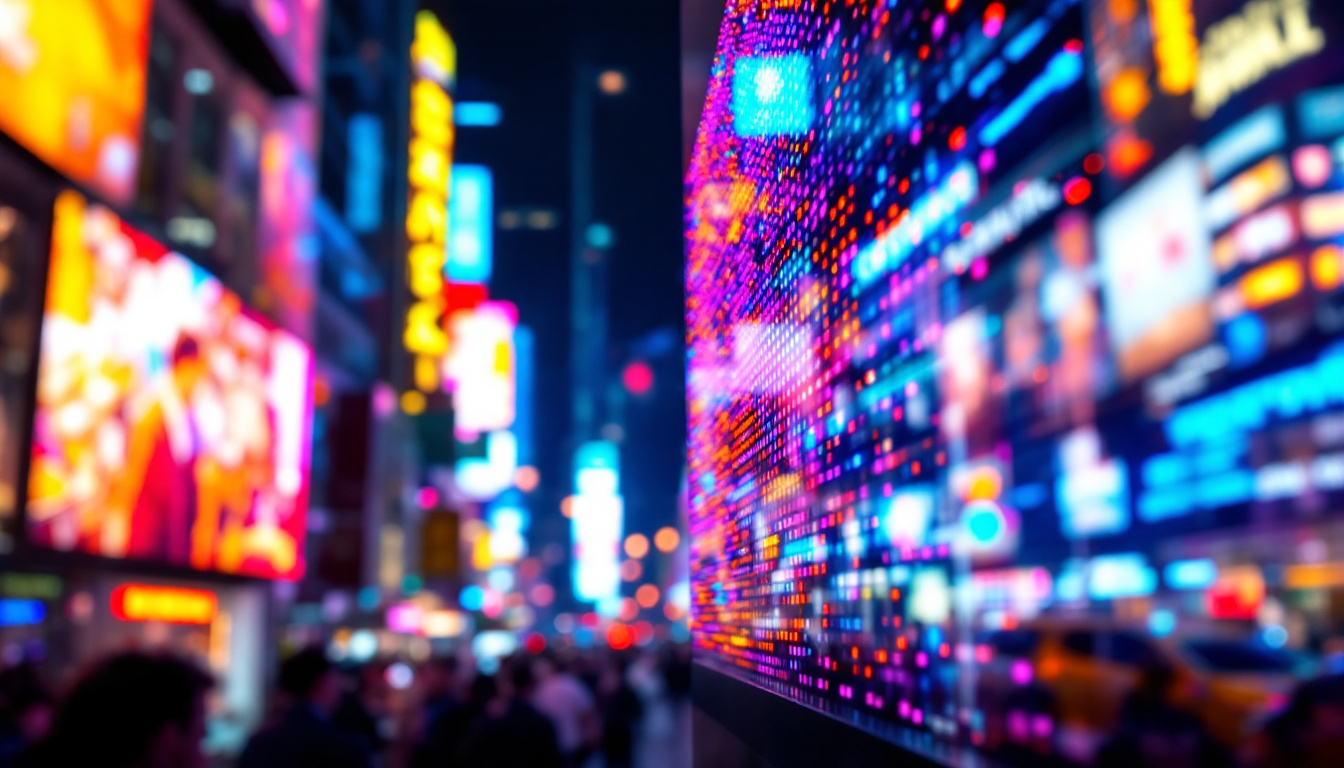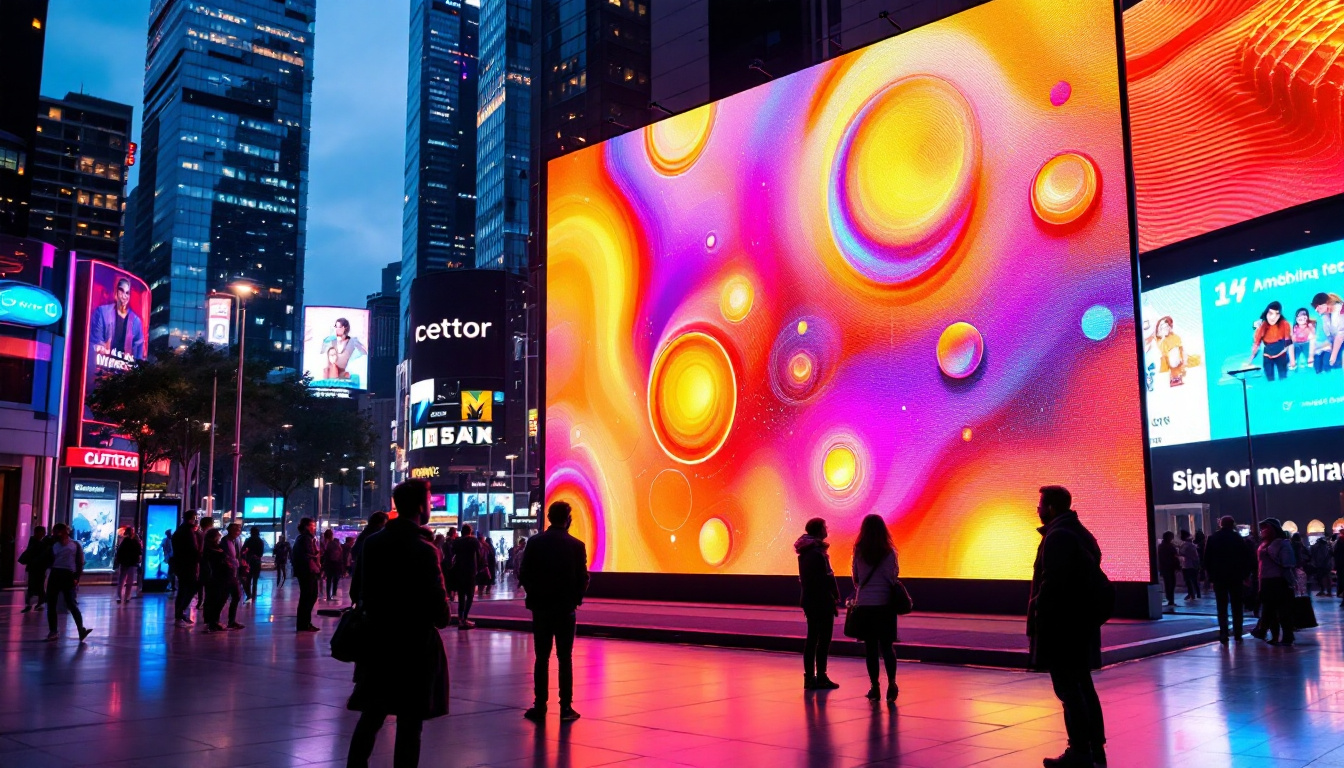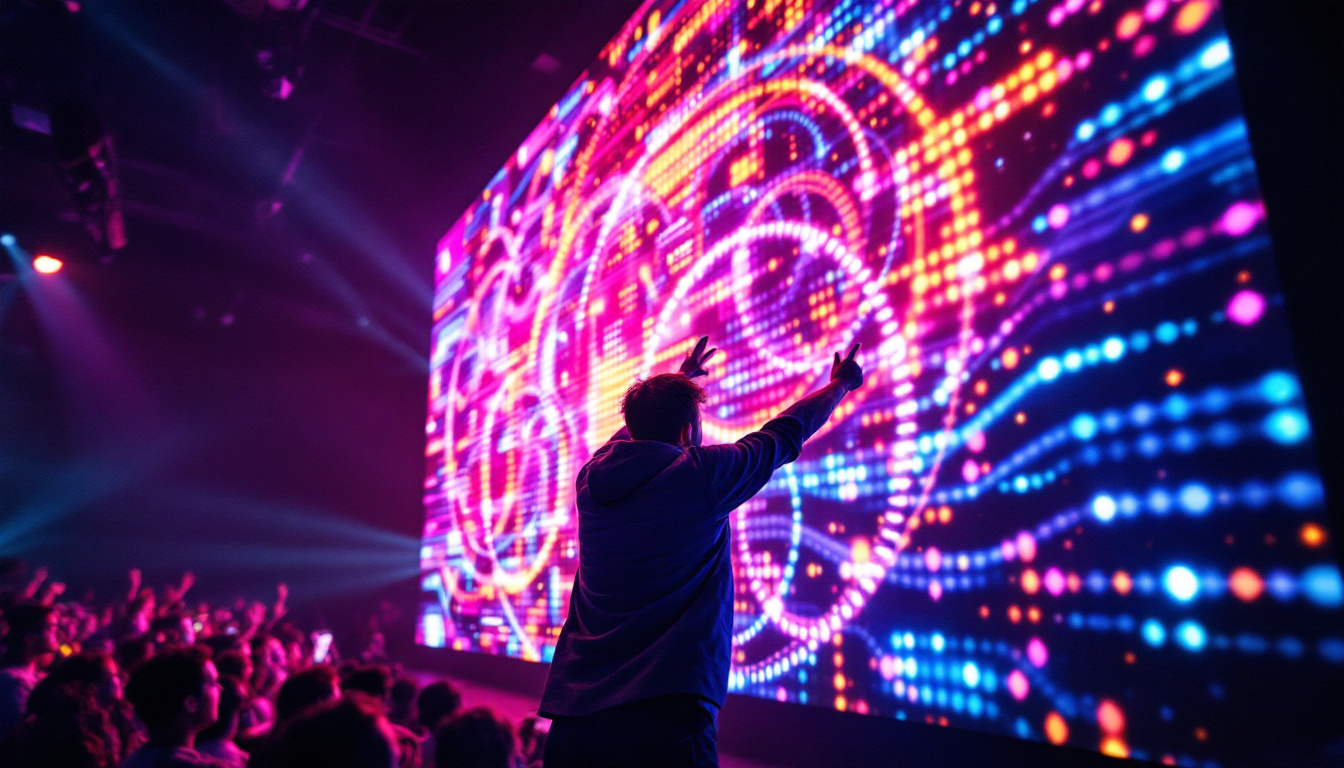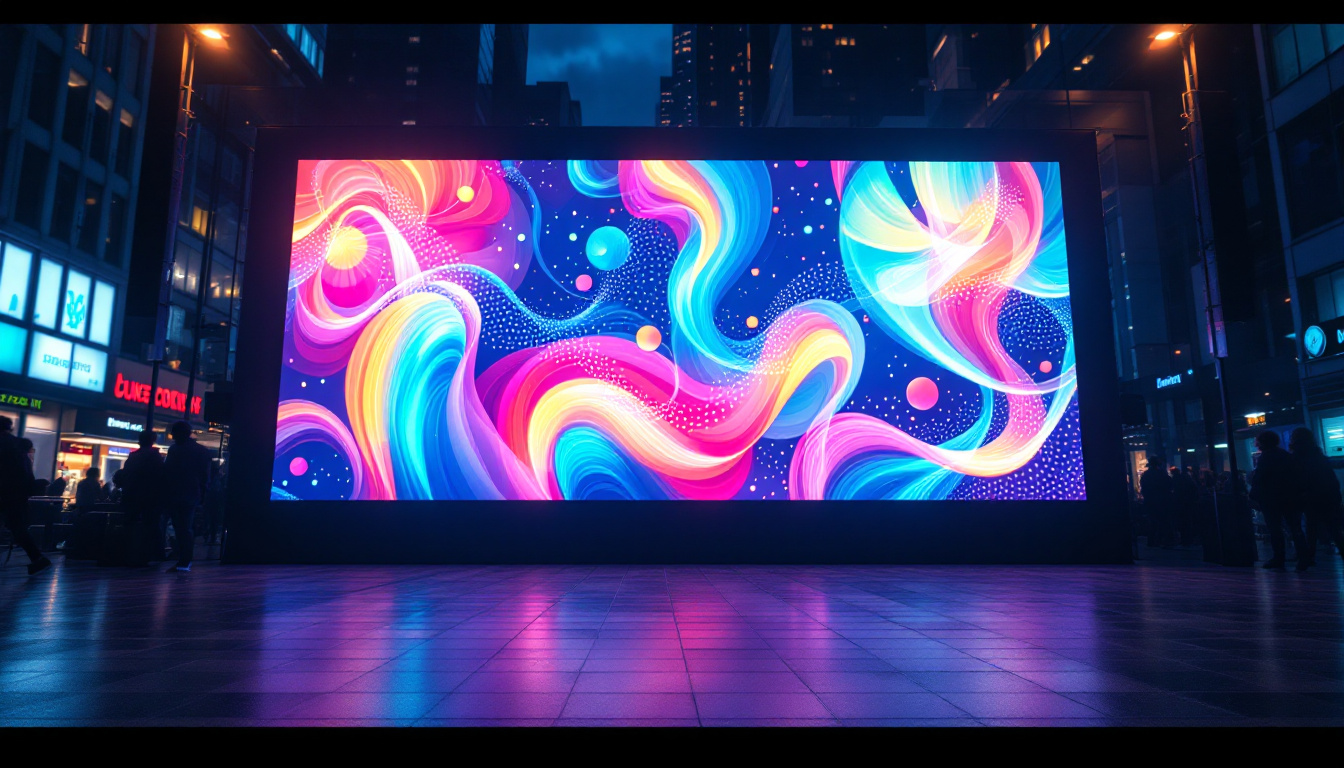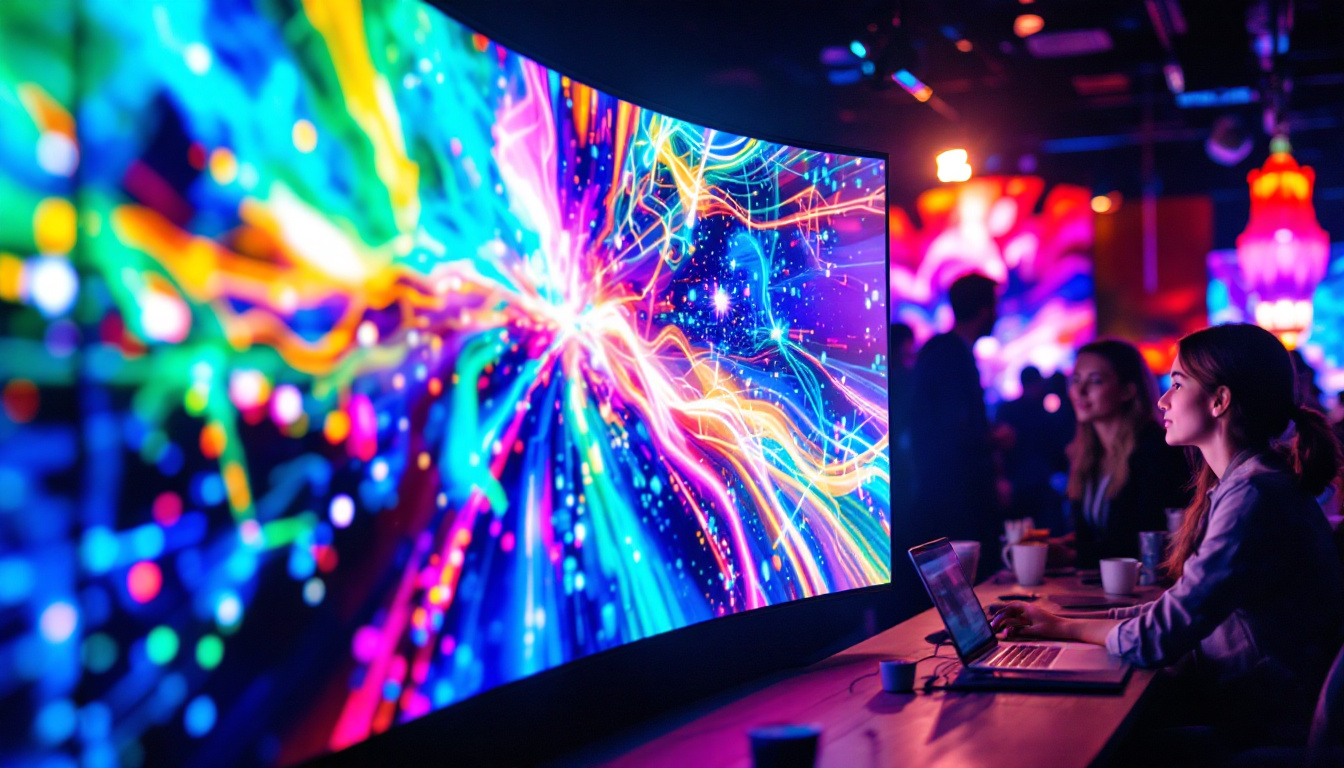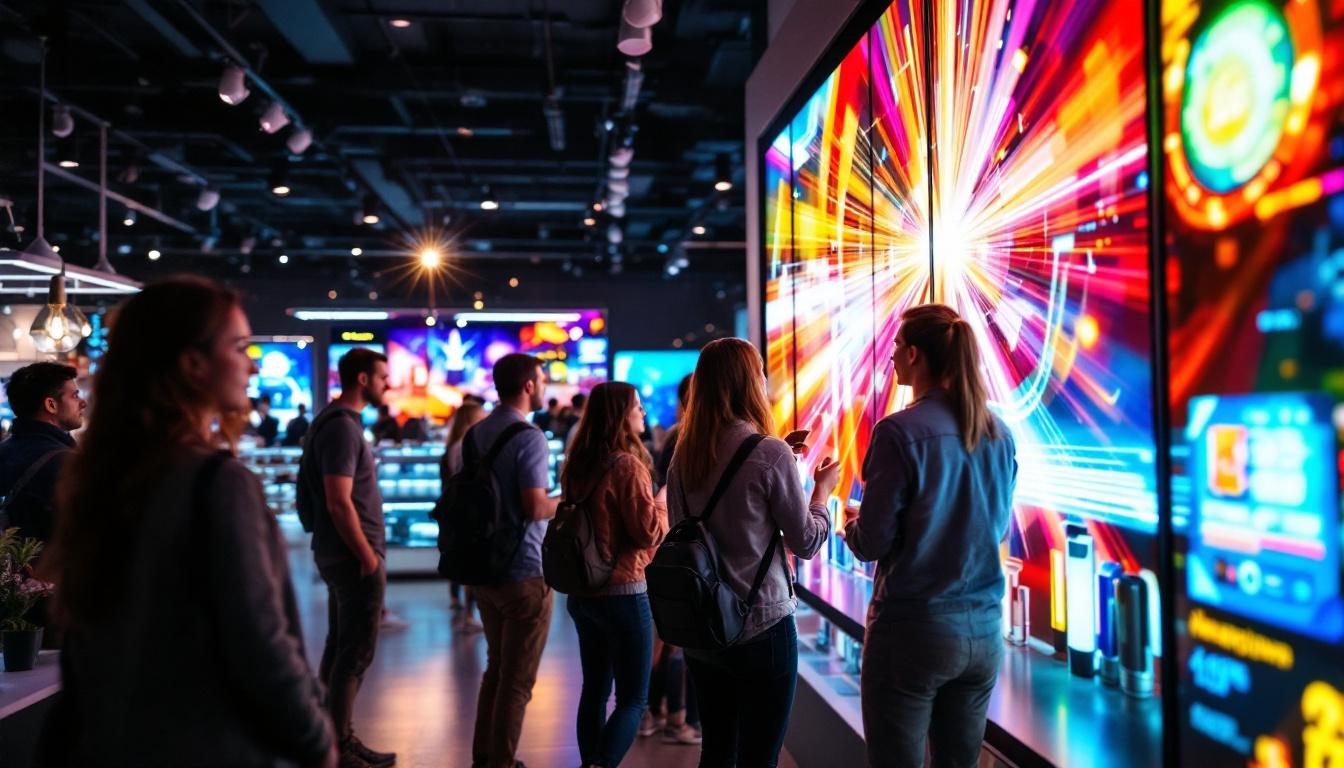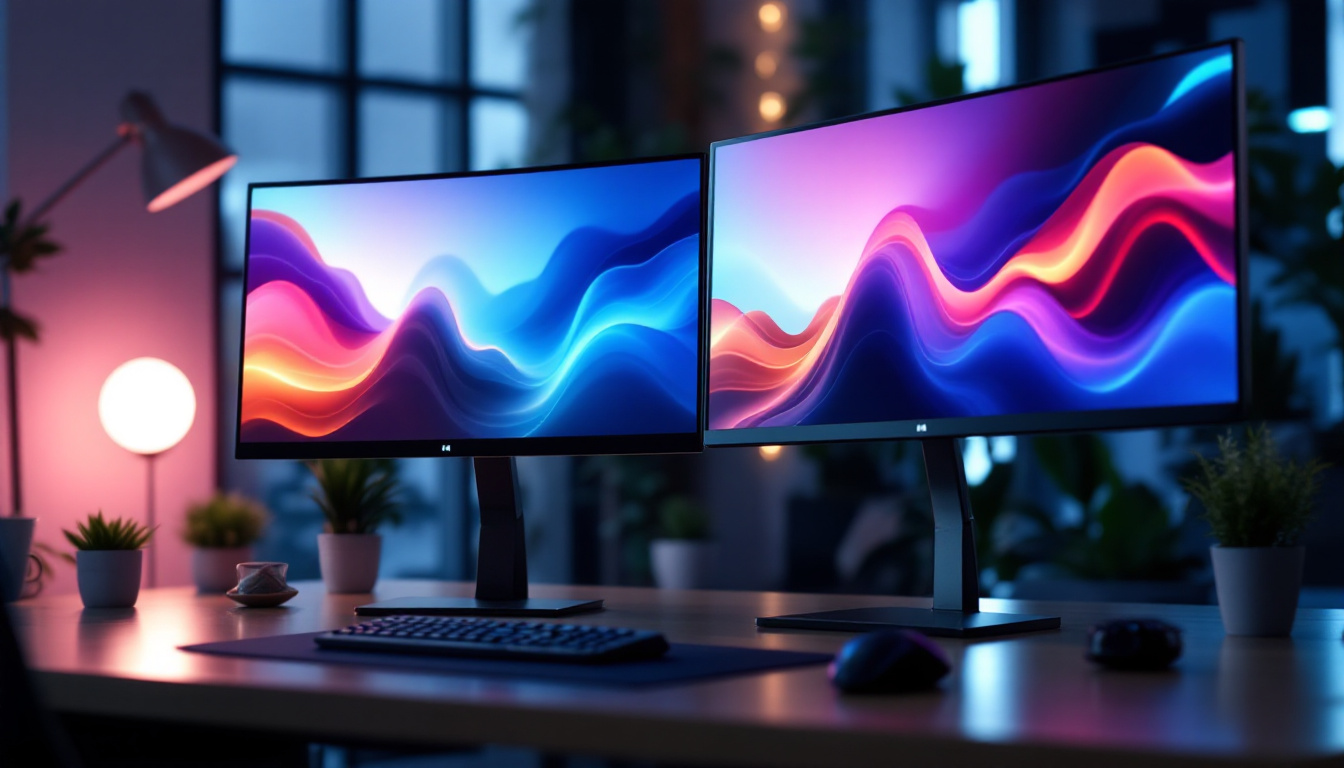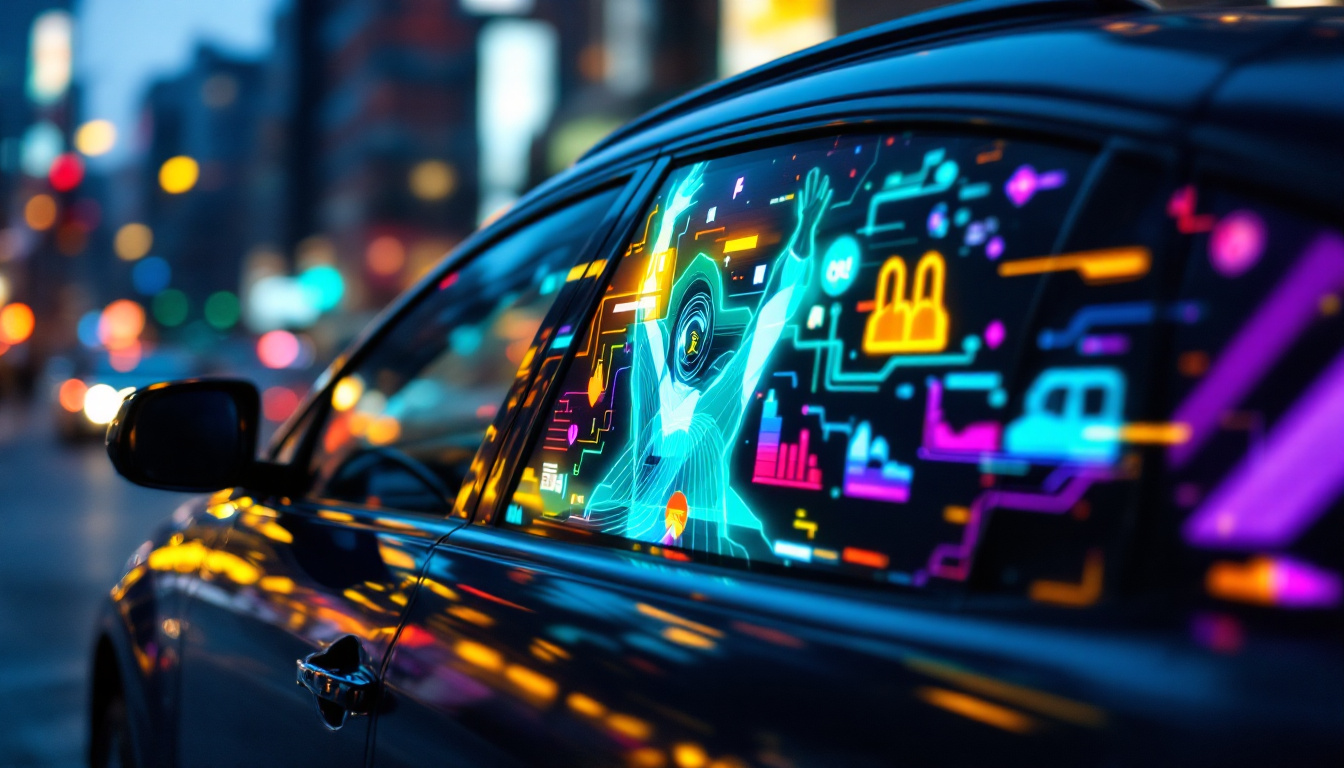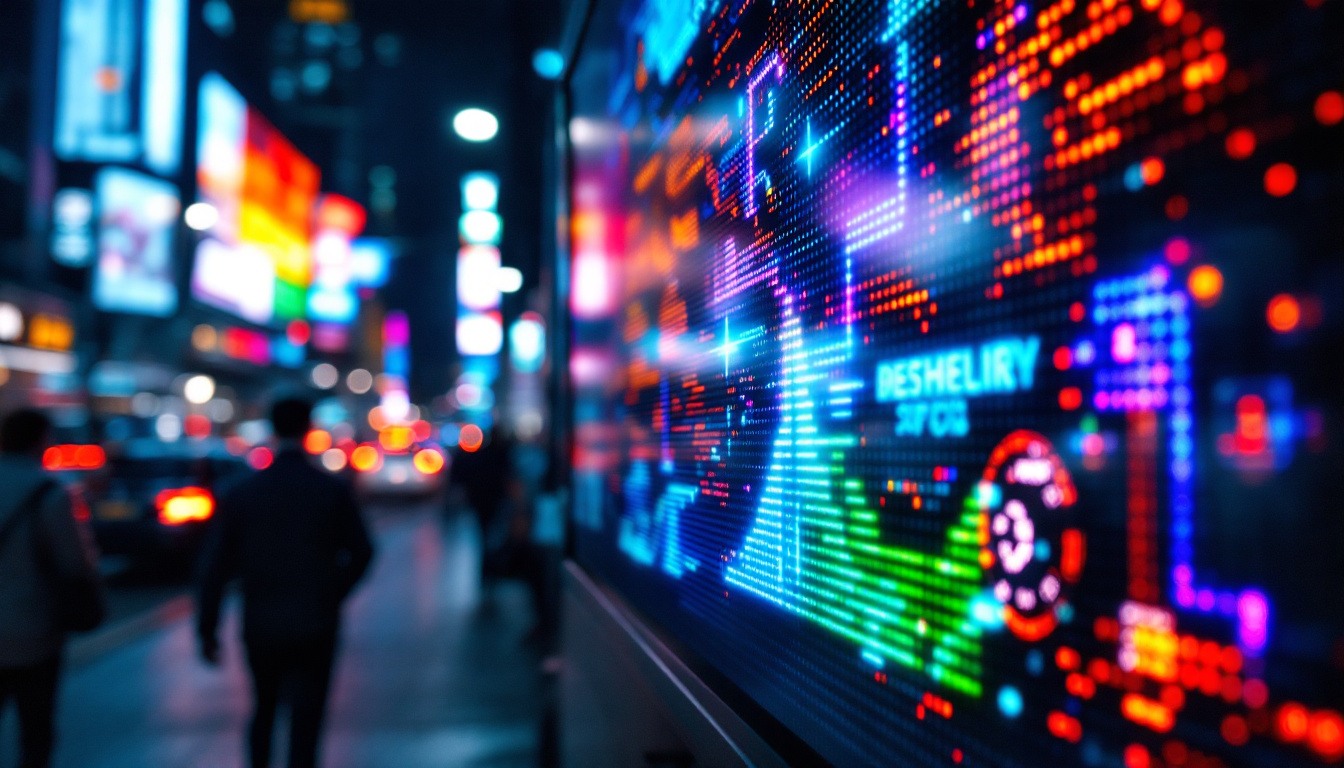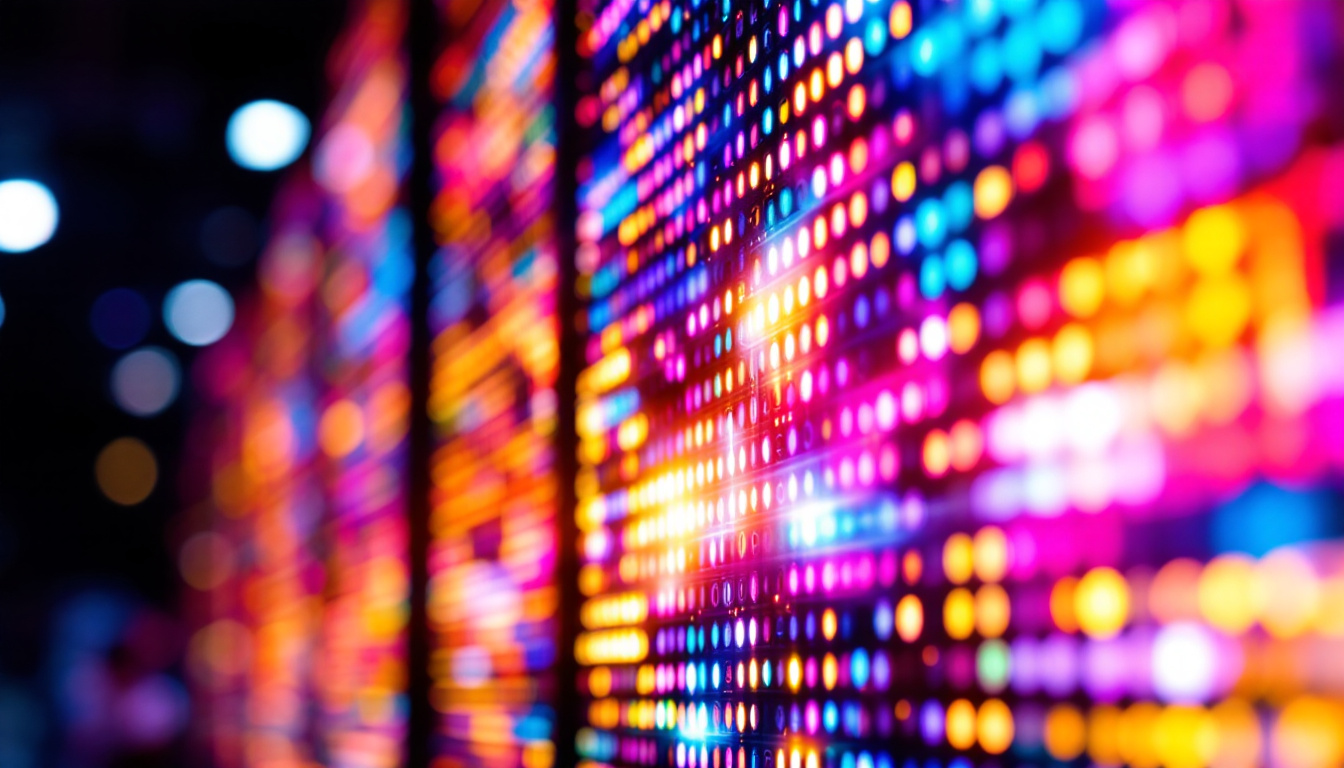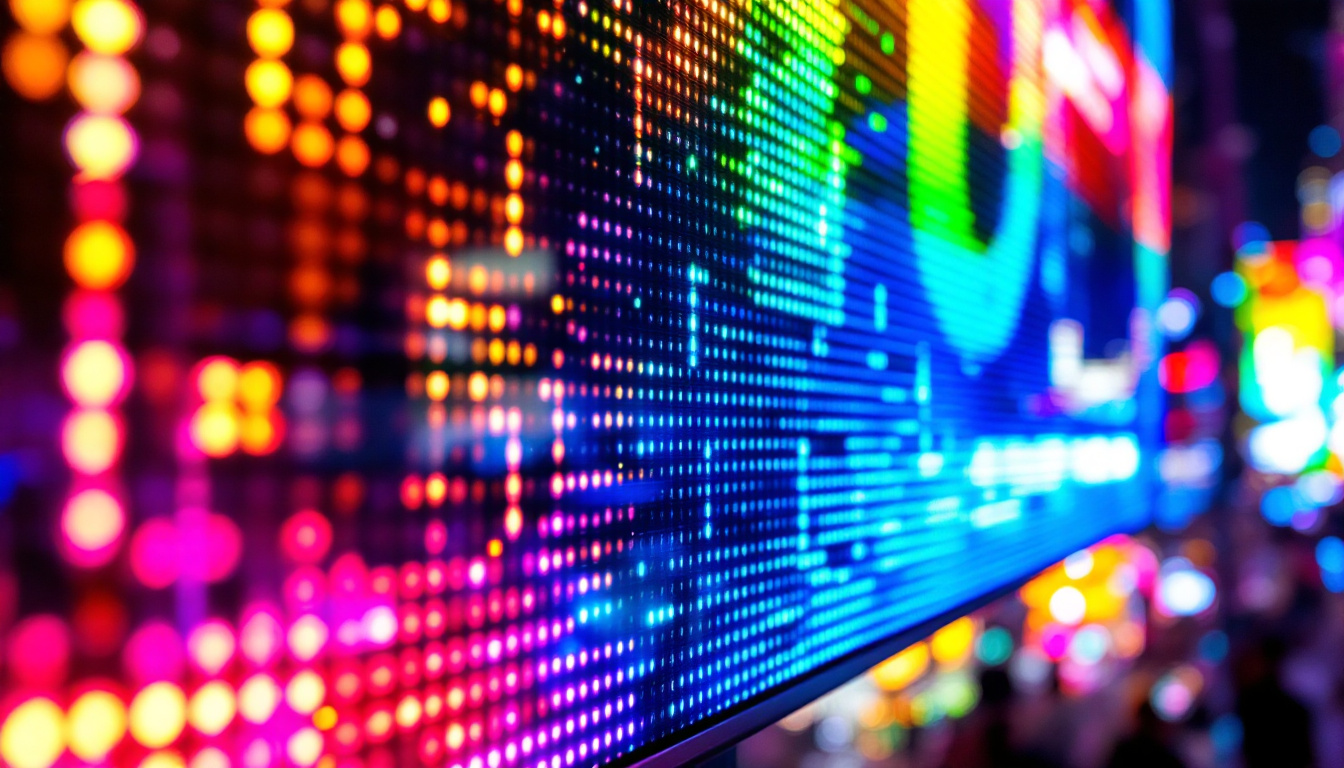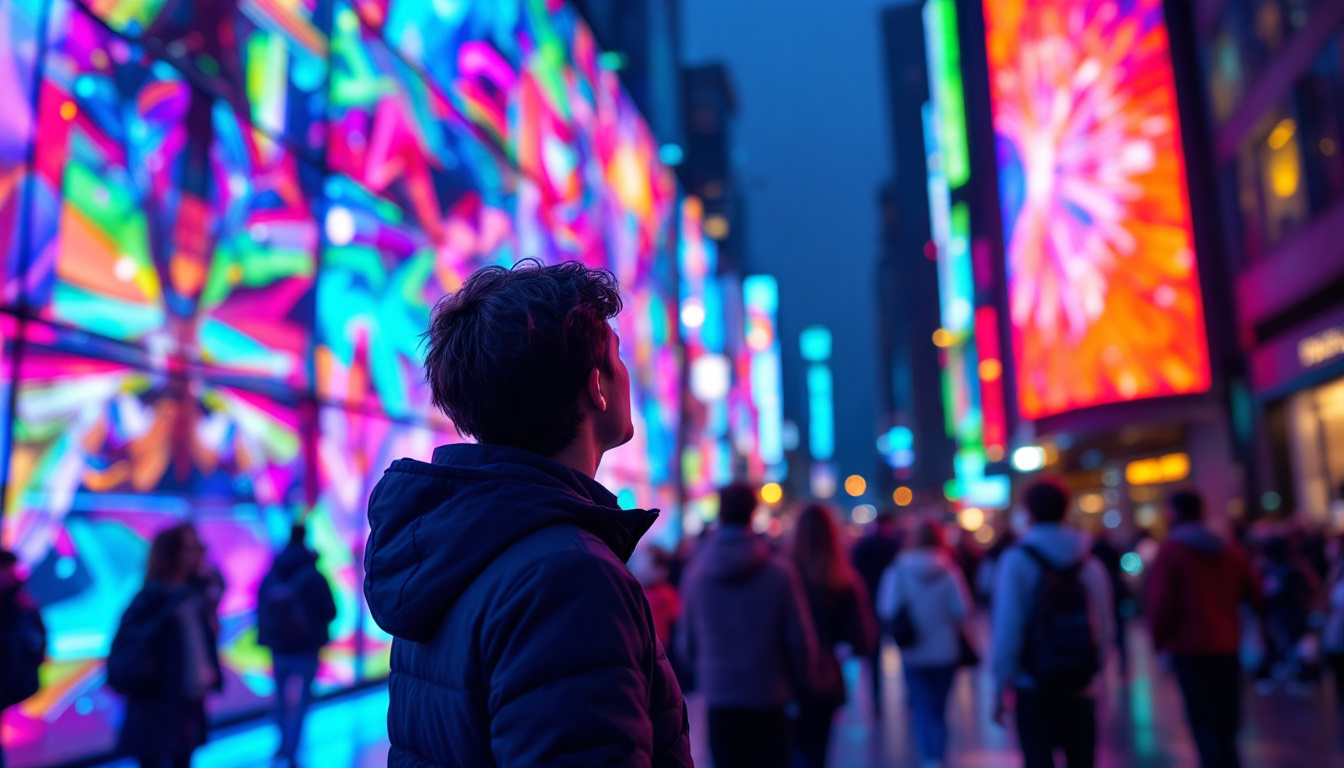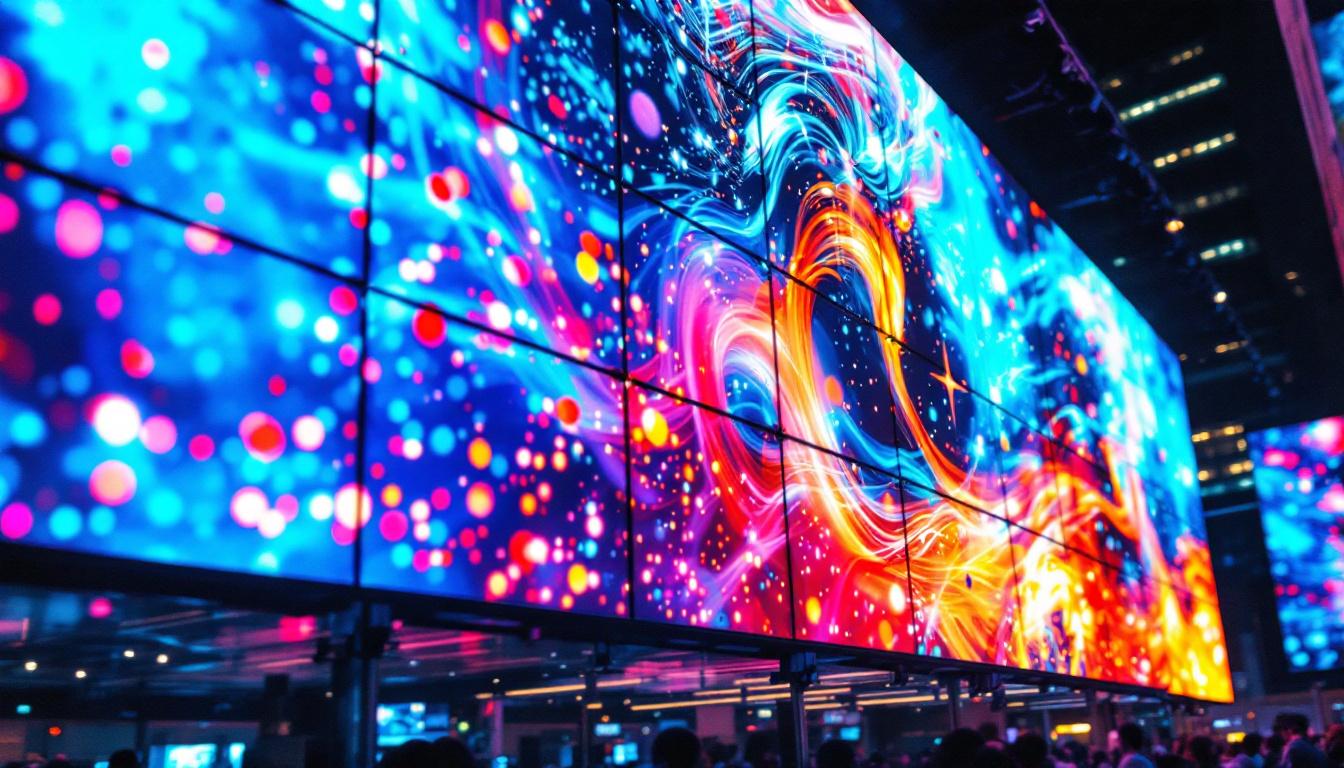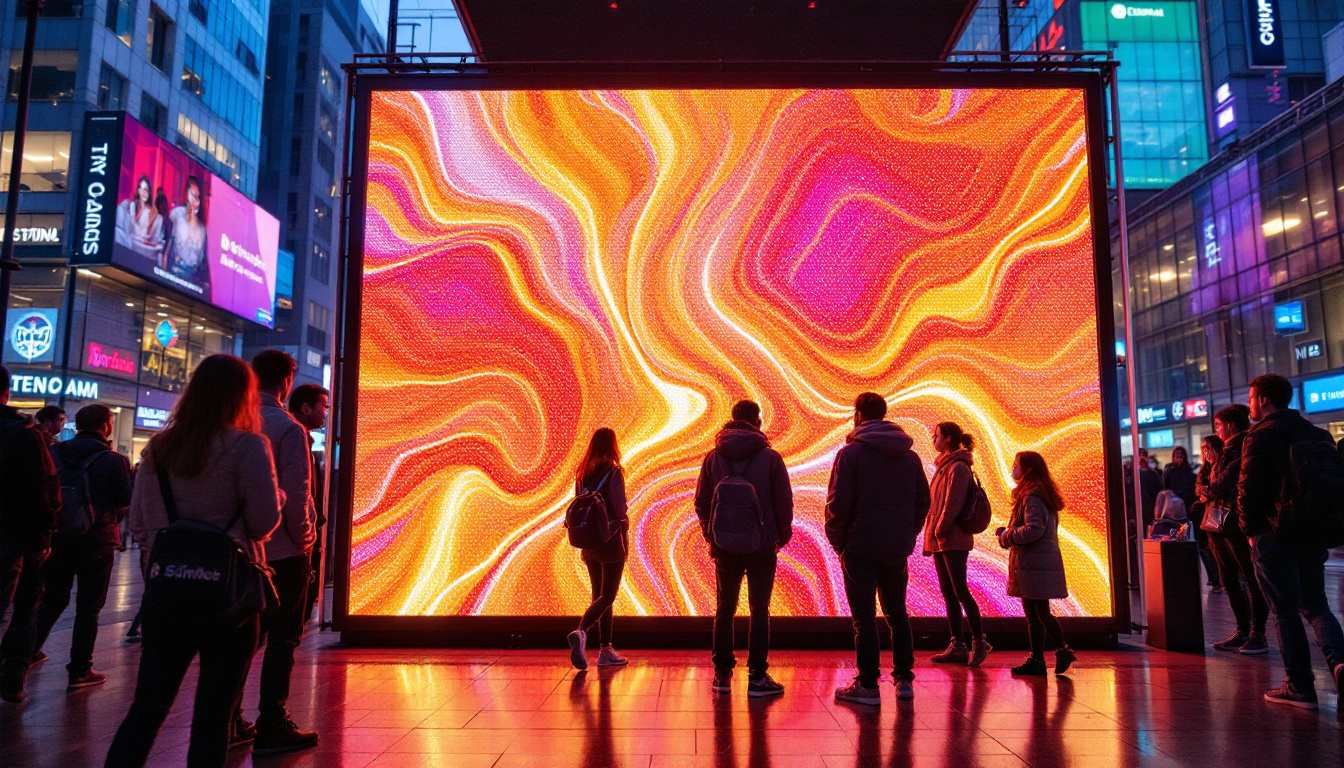In today’s fast-paced world, effective communication is crucial for businesses, educational institutions, and public spaces. One of the most innovative solutions for conveying information is the LED display board. This technology has transformed the way messages are delivered, making them more engaging and visually appealing. This article delves into the workings of LED displays, their applications, advantages, and the future of this technology.
Understanding LED Display Technology
LED, or Light Emitting Diode, technology has revolutionized the way we display information. Unlike traditional display systems, LED displays utilize numerous tiny diodes to produce light, creating vibrant images and text. This technology is not only energy-efficient but also offers a wide range of colors and brightness levels, making it ideal for various applications. The versatility of LED displays has led to their adoption in numerous fields, from advertising to entertainment, and even in the realm of art installations, where they can create immersive experiences.
How LED Displays Work
At the core of an LED display is a matrix of LEDs arranged in a grid. Each LED can emit light in different colors, and by controlling the intensity of each diode, a full spectrum of colors can be produced. The combination of red, green, and blue (RGB) LEDs allows for the creation of millions of color variations. This capability is further enhanced by advanced technologies such as pixel mapping, which allows for precise control over individual pixels, resulting in stunning visual effects that can captivate audiences.
The display is driven by a controller that receives input from a computer or other media source. This controller processes the information and translates it into signals that dictate how each LED should light up. This dynamic control enables the display to show everything from simple text to complex animations and videos. Additionally, many modern LED displays are equipped with smart technology, allowing for real-time updates and interactivity, which can significantly enhance viewer engagement and provide tailored content based on audience preferences.
Types of LED Displays
LED displays come in various types, each designed for specific applications. The most common types include:
- Indoor LED Displays: These are typically used in venues like shopping malls, conference rooms, and theaters. They offer high resolution for close viewing and are designed to be viewed in low-light conditions. Their ability to display high-definition content makes them perfect for presentations and live events, where clarity and detail are paramount.
- Outdoor LED Displays: Built to withstand the elements, outdoor displays are brighter and more durable. They are commonly used for billboards, sports arenas, and public announcements. These displays often feature weather-resistant coatings and robust structures to ensure longevity, even in harsh weather conditions, and can be seen from great distances, making them effective for advertising and information dissemination.
- Transparent LED Displays: These innovative displays allow light to pass through, making them ideal for storefronts and creative installations. They provide a unique way to showcase products without obstructing visibility. This transparency not only enhances aesthetic appeal but also allows businesses to maintain an open and inviting atmosphere while still delivering dynamic content to attract customers.
Another emerging type of LED display is the flexible LED screen, which can be bent and shaped to fit unconventional spaces. This adaptability opens up new possibilities for creative installations and architectural designs, allowing for seamless integration into various environments. As technology continues to evolve, we can expect to see even more innovative applications of LED displays, further enhancing their role in communication and visual storytelling.
Applications of LED Displays
The versatility of LED displays makes them suitable for a wide range of applications across various sectors. From advertising to education, the potential uses are vast and varied.
Advertising and Marketing
One of the most prominent uses of LED displays is in advertising. Businesses leverage these displays to capture the attention of potential customers with bright, dynamic content. Digital billboards and storefront displays can showcase promotions, new products, or upcoming events, often in real-time. This immediacy allows businesses to adapt their messaging based on current trends or customer behaviors.
Moreover, the ability to display video content enhances engagement, making advertisements more memorable. The flexibility of LED displays also means that businesses can easily update their messages without the need for physical changes, thus saving time and resources. Additionally, the integration of social media feeds into LED displays allows businesses to create a more interactive experience, encouraging customer participation and feedback. This not only drives engagement but also helps brands build a community around their products and services.
Public Information Systems
LED displays play a vital role in public information systems. Transportation hubs like airports and train stations utilize LED boards to provide real-time updates on arrivals and departures. This information is crucial for travelers, ensuring they have the latest details about their journeys.
In addition to transportation, municipalities use LED displays for public announcements, emergency alerts, and event promotions. These displays can be strategically placed in high-traffic areas to maximize visibility and ensure that important messages reach the public promptly. For example, during natural disasters, LED displays can serve as a critical communication tool, providing timely updates and safety instructions to the community. Furthermore, the use of LED technology in public spaces can enhance the aesthetic appeal of urban environments, transforming dull areas into vibrant hubs of information and activity.
Education and Corporate Communication
In educational institutions, LED displays are used to enhance learning experiences. They are often found in classrooms, auditoriums, and common areas, displaying schedules, announcements, and educational content. The engaging nature of LED displays helps capture students’ attention and can facilitate interactive learning.
Similarly, corporations utilize LED displays for internal communication. In office spaces, they can display important updates, performance metrics, or motivational messages. This fosters a sense of community and keeps employees informed about company developments. Beyond mere communication, LED displays can also be employed for training purposes, showcasing instructional videos or interactive presentations that enhance employee skills. Moreover, the ability to integrate data visualization tools into LED displays allows companies to present complex information in a more digestible format, making meetings and presentations more effective and engaging for all participants.
Advantages of LED Displays
The adoption of LED display technology comes with numerous advantages that make it a preferred choice for many organizations. Understanding these benefits can help in making informed decisions regarding display solutions.
Energy Efficiency
One of the standout features of LED displays is their energy efficiency. Compared to traditional display technologies, LEDs consume significantly less power, leading to lower electricity bills. This is particularly beneficial for businesses that operate large displays or use them for extended hours.
Moreover, the long lifespan of LED lights—often exceeding 50,000 hours—means fewer replacements and reduced waste, contributing to a more sustainable approach to display technology.
High Visibility and Brightness
LED displays are known for their exceptional brightness, making them easily visible even in direct sunlight. This high visibility is crucial for outdoor applications, where competing with natural light can be challenging. The ability to adjust brightness levels also allows for optimal viewing in various environments.
Additionally, the clarity and resolution of LED displays ensure that content is sharp and easy to read from a distance, enhancing the overall effectiveness of the displayed information.
Versatility and Customization
LED displays are incredibly versatile, allowing for a wide range of applications and designs. They can be customized in size, shape, and configuration to fit specific needs. Whether it’s a large billboard or a small indoor screen, LED technology can adapt to various environments and requirements.
This customization extends to the content displayed as well. Organizations can easily update their messaging, incorporate animations, and even integrate interactive elements, making LED displays a dynamic communication tool.
The Future of LED Display Technology
As technology continues to evolve, so does the potential for LED displays. Innovations in this field are paving the way for even more advanced applications and capabilities.
Advancements in Resolution and Quality
Future developments in LED technology are expected to focus on enhancing resolution and image quality. With the advent of microLED and miniLED technologies, displays are becoming smaller and more efficient while delivering higher pixel densities. This means that even at close viewing distances, images will remain sharp and detailed.
Such advancements will open new doors for applications in virtual reality, augmented reality, and immersive experiences, where high-quality visuals are essential for user engagement.
Integration with Smart Technologies
The integration of LED displays with smart technologies is another exciting trend. As the Internet of Things (IoT) continues to expand, LED displays can be connected to various devices and systems, allowing for real-time data sharing and interaction.
For instance, LED displays in retail environments could be linked to customer data, enabling personalized advertising based on shopping habits. This level of interactivity and customization is set to enhance user experiences significantly.
Environmental Considerations
With growing awareness of environmental issues, the future of LED display technology will likely prioritize sustainability. Manufacturers are increasingly focusing on eco-friendly materials and production methods, as well as creating displays that are easier to recycle.
Moreover, advancements in energy efficiency will continue to reduce the carbon footprint of LED displays, making them a more sustainable choice for businesses and organizations looking to minimize their environmental impact.
Conclusion
LED display technology has transformed the landscape of visual communication, offering a dynamic and engaging way to convey information. With applications spanning advertising, public information, education, and corporate communication, the versatility of LED displays is unmatched.
The advantages of energy efficiency, high visibility, and customization make LED displays an attractive option for organizations of all sizes. As technology continues to advance, the future of LED displays promises even greater innovations, paving the way for smarter, more interactive, and environmentally friendly solutions.
In a world where effective communication is paramount, LED displays stand out as a powerful tool, capable of capturing attention and delivering messages with impact. Embracing this technology can lead to enhanced engagement, improved visibility, and ultimately, greater success in reaching audiences.
Explore Cutting-Edge LED Display Solutions with LumenMatrix
Ready to elevate your visual communication strategy with the latest in LED display technology? Discover the innovative solutions offered by LumenMatrix, a leader in crafting state-of-the-art LED displays that bring your brand to life. From the vibrant clarity of Indoor LED Wall Displays to the robust brilliance of Outdoor LED Wall Displays, and from the dynamic versatility of Custom LED Displays to the revolutionary transparency of LED Transparent Displays, LumenMatrix has the perfect solution to captivate your audience. Don’t miss the opportunity to transform your message into an unforgettable visual experience. Check out LumenMatrix LED Display Solutions today and see the difference that cutting-edge technology can make.

